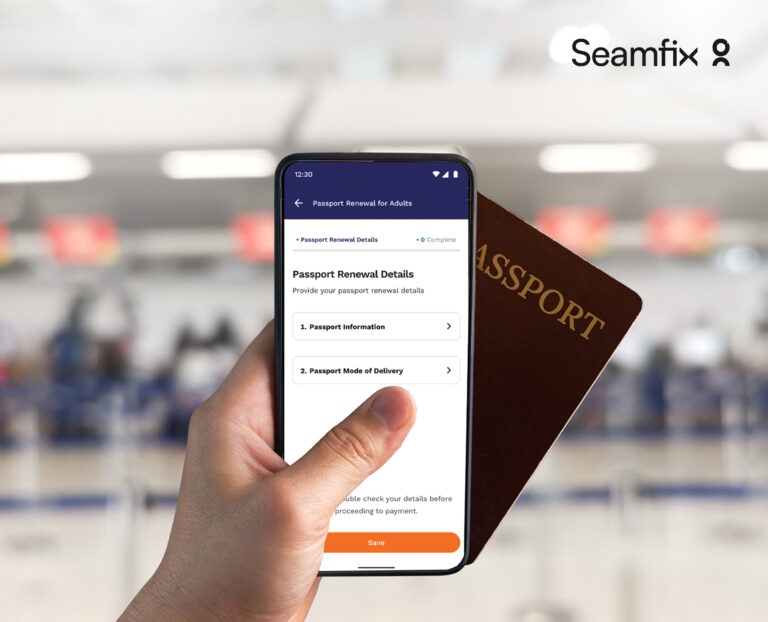Let’s face it—managing user access in an organization can feel like herding cats. With so many users, roles, and permissions to keep track of, it’s easy to get overwhelmed. But what if there was a way to simplify the process, make it more efficient, and still keep your systems secure? Enter Group-Based Access Control (GBAC), a smart and practical approach to managing access that’s as easy as organizing a group chat.
In this article, we’ll break down what Group-Based Access Control is, why it’s a game-changer for security and efficiency, and how tools like Seamfix iAM can help you implement it seamlessly. Let’s get started!
What is Group-Based Access Control?
Group-Based Access Control (GBAC) is a method of managing user permissions by organizing users into groups and assigning access rights to those groups instead of individual users. Think of it like creating a WhatsApp group: instead of messaging each person individually, you send one message to the group, and everyone in it gets the information.
In the context of IAM, GBAC works like this:
- Create Groups: Organize users into groups based on their roles, departments, or responsibilities (e.g., HR, Finance, IT).
- Assign Permissions: Grant access to resources (e.g., applications, files, systems) to the entire group.
- Manage Access Centrally: When a user joins or leaves a group, their access is automatically updated based on the group’s permissions.
This approach simplifies access management, reduces errors, and ensures consistency across your organization.
Why is Group-Based Access Control Important?
Managing access on a per-user basis can quickly become a nightmare, especially as your organization grows. Here’s why GBAC is a better way:
- Saves Time and Effort: Instead of assigning permissions to each user individually, you can manage access at the group level. This means fewer clicks, less manual work, and fewer mistakes.
- Improves Security: By organizing users into groups and assigning permissions based on roles, you ensure that users only have access to what they need—no more, no less. This reduces the risk of unauthorized access.
- Simplifies Onboarding and Offboarding: When a new employee joins, you simply add them to the appropriate group, and they automatically get the access they need. Similarly, when someone leaves, removing them from the group revokes their access instantly.
- Enhances Compliance: GBAC makes it easier to enforce the principle of least privilege (PoLP) and maintain audit trails, helping you meet regulatory requirements.
How Does Group-Based Access Control Work?
Let’s break it down into simple steps:
- Identify Roles and Groups: Start by identifying the different roles in your organization (e.g., HR, Finance, IT) and create groups for each role.
- Assign Permissions to Groups: Define what each group needs access to. For example, the HR group might need access to employee records, while the Finance group might need access to accounting software.
- Add Users to Groups: Assign users to the appropriate groups based on their roles. Once added, they’ll automatically inherit the group’s permissions.
- Manage Changes Centrally: If a user’s role changes, simply move them to a different group. If a group’s permissions need updating, make the change once, and it applies to everyone in the group.
Real-World Use Cases for Group-Based Access Control
Let’s look at some scenarios where GBAC can make a big difference:
1. Onboarding New Employees
- When a new employee joins, you add them to the appropriate group (e.g., Marketing, Sales, IT), and they instantly get access to all the tools and resources they need to do their job.
2. Managing Departmental Access
- If your HR team needs access to a new payroll system, you can update the HR group’s permissions once, and everyone in the group gets access automatically.
3. Handling Role Changes
- If an employee moves from the Sales team to the Marketing team, you simply move them from the Sales group to the Marketing group. Their access is updated instantly, without any manual intervention.
4. Offboarding Employees
- When an employee leaves, removing them from all groups ensures their access is revoked immediately, reducing the risk of security breaches.
How Seamfix iAM Makes Group-Based Access Control Easy
Implementing GBAC doesn’t have to be complicated. With the right tools, you can automate the process and make it seamless. That’s where Seamfix iAM comes in.
Seamfix iAM is an Identity and Access Management solution designed to simplify and secure access management. Here’s how it can help with GBAC:
- Group Management: Easily create and manage groups, assign permissions, and add or remove users.
- Automated Permissions: When users are added to a group, they automatically inherit the group’s permissions—no manual work required.
- Audit and Compliance: Detailed logs and reports make it easy to track group memberships and permissions, helping you stay compliant with regulations.
- Integration: Seamfix iAM integrates with your existing systems, making it easy to implement GBAC across your organization.
By leveraging Seamfix iAM, you can take the hassle out of GBAC and focus on what really matters—keeping your organization secure and efficient.
Best Practices for Implementing Group-Based Access Control
Ready to get started with GBAC? Here are some best practices to keep in mind:
- Define Clear Roles and Groups: Start by identifying the roles in your organization and creating groups for each role.
- Use the Principle of Least Privilege: Only grant groups the access they need to perform their tasks—nothing more.
- Regularly Review Groups and Permissions: Periodically review your groups and their permissions to ensure they’re still relevant and secure.
- Train Your Team: Make sure your team understands how GBAC works and how to use it effectively.
Final Thoughts
Group-Based Access Control is a simple yet powerful way to manage user access in your organization. By organizing users into groups and assigning permissions at the group level, you can save time, improve security, and simplify access management.
And if you’re looking for a tool to make GBAC even easier, Seamfix iAM is here to help. With its user-friendly interface, automation capabilities, and robust security features, Seamfix iAM takes the complexity out of access management.
So, why wait? Start exploring Group-Based Access Control today and take the first step toward a smarter, more secure way to manage access in your organization.
Curious to learn more about Seamfix iAM? Visit their website at https://seamfix.com/iam/ or reach out to their team for a demo. Your journey to better access management starts here!


